Google launched the Open Automotive Alliance in January to put Android in your dashboard to control your phone, just like Apple announced CarPlay as a system to control your iOS device. Parrot's Asteroid Smart doesn't participate in either of these programs, but goes their own way instead.
The Parrot Asteroid Smart, which has been sold preinstalled in certain Mazda and Hyundai models, runs a version of Android 2.3 Gingerbread and comes from one of the best names in handsfree audio. It's sleek, good looking and, perhaps most importantly, available to buy today.
Car navigation and infotainment systems aren't easy to get right. Products needs good handsfree operation, quality maps, an easy-to-use user interface and smartphone control. The best units on the market also tap into a mobile's data connection for displaying real-time traffic data and playback of streaming Internet radio.
And for many buyers, those features are considered essentials. Options can include steering wheel controls, running Internet music streaming sources on the dashboard unit itself instead of from the smartphone, or even Web browsing.
Design
The Parrot Asteroid Smart is basically a third-party replacement for the modern infotainment setups now offered by most major auto makers. A 2-DIN unit with large 6.2-inch multitouch display, the Parrot features an impressive host of features, including compatibility with navigation apps, voice recognition and a solid selection of connectivity options.
The unit comes with a microphone with two mic elements and either a double-sided tape mount or a visor clip mount. With its array of external hardware components, there are a large number of wires to run and accessories to install.
First, a GPS module needs to be mounted on top of the dash or somewhere it can get signal from the sky. One of the four available USB ports is used as a dedicated iOS device connection, while a USB extension cable can connect to flash drives or a mobile modem if you want to have cell service for the head unit instead of using Personal Hotspot on your iPhone.
Basic audio out functions include front/rear/side RCA jacks, a mic input and one line in jack. The Parrot also supports video in and out (again via RCA cables), as well as support for a rear-view camera if you have one. An antenna port, Micro-USB port for PC connections (diagnostics) and steering wheel control interface (Parrot UNIKA) round out the rear panel.
It's important to connect all of the ports on the back of the radio and run them somewhere useful like the glovebox. Changing your mind to install an additional cable means removing dashboard fascia to get at it.
Part of the install process involves connecting the head unit to the emergency (parking) brake switch. The point of this is to limit certain onscreen controls to times when the car has its parking brake on. In early firmware versions, it was possible to defeat this each time you turned the radio on, but later software updates removed this option.
Finally, the large screen is a permanent fixture, meaning it stays in the car at all times. Parrot's mode of security is removing a one centimeter-wide "faceplate" piece integrated in the unit's bezel that contains the power switch.
Performance
Because this is a Parrot product, you can be sure that there's a strong emphasis on good handsfree quality. The microphone and in-call audio is superb. It has voice-dialing built in, so it's not dependent on Siri (or Google Now or any other in-phone voice-dialing feature).
Not relying on a mobile phone's voice assistant functions means having to load all your contacts into the unit over Bluetooth. This would be alright, but there's a 5,000 contact limit and our Contacts app has 26,495 people in it. We recognize that we're probably an exceptional case, but the restriction could be a problem for some power users.
We really wish that Parrot had included an Android application to prompt Siri on a Bluetooth-connected iOS device. Which brings us to discuss buttons.
Buttons
The Parrot Asteroid Smart has one physical button for power located at the bottom of the removable "faceplate" that is about one centimeter wide. Underneath the plastic piece is an SD slot that contains offline map data for the included iGo maps application.
It should be noted that there are no physical volume controls and no button to prompt voice dialing from a smartphone (Siri, Google Now, etc.). This is a problem.
Parrot offers an adapter to match up to a number of existing OEM steering wheel controls, but our car was not supported. Further, if you own an older model vehicle, chances are good that it doesn't have these controls at all.
Android offers three different types of volume levels — music volume, system volume, navigation voice volume — and having to "tap, tap and slide" to adjust them at just the right moment while driving is unnecessarily hard. Honestly, a simple knob would have been really helpful here.
We also wish that there were a way to prompt voice dialing via hardware button, preferably using the phone (Siri) instead of Parrot's own internal version. If this had been a momentary push on a volume knob, we'd have been delighted.
Sound
The Asteroid Smart comes packed with an EQ and spatialization controls, allowing us to adjust the crossover for our subwoofers just fine. With the ability to output audio to external amplifiers, the head unit also lets users offload tuning to specialized equipment.
It would have been a nice touch, but advanced functions like automatically balancing and equalizing for the car's acoustic properties are not included. Neither is the ability to use the microphone to detect and play the inverse frequency of road noise, effectively making a quieter car through noise-cancellation, but as an aftermarket stereo, it does a decent enough job.
The Interface
The Asteroid Smart provides its own launcher, which is a grid of apps seen on most Android and iOS devices. Here, Parrot has defaulted to a large icon view, allowing only six apps to be viewed onscreen at any given time. The background wallpaper is brushed metal, although that can easily be changed.
Parrot has placed audio controls for Rew/Play-Pause/FF in the notifications bar of Android, and made them change appropriately when the source changes from music player to radio. There is also a quick-change function to change audio sources from a dedicated menu.
The music player and FM radio are brushed metal interfaces. The FM radio does a good job of picking up RDS information, but does a poor job of displaying it. RDS is the Radio Data System that displays the station name, artist, album, and song information, like "Get Lucky" by Daft Punk feat. Pharrell Williams. The problem here is that Parrot uses the song the data that was received while it was scanning for stations as the station name, and instead of using the large 6.2 inch screen to display all this information at once, scrolls a small amount of it (5-8 chars) in very large text. Some of this is the fault of RDS: Every station can broadcast it differently. Even so, they could do a better job of displaying it.
Unfortunately, the color scheme used for all menus is the old Android orange juxtaposed with white or black.
The summary is that every part of this experience is visually jarring and changes not only from app to app, but is internally inconsistent across its core functions.
On its own, the Asteroid Smart shows what happens when you ship an Android-based device outside of Google's Play and Apps experience: You get a store (the Asteroid Market) with a limited number of apps, a well-made AM/FM tuner, and pre-installed navigation in the form of iGo.
Let's get this out of the way. iGo is pretty terrible. The solution is to pay an additional $49 to $79 in the Asteroid Market for Tom Tom's app and maps. Or to use the Linux-of-the-navigation-world, Waze. Waze sometimes crashed, and it uses streaming data rather than offline maps, but it has the benefit of being able to re-route to avoid traffic in realtime. It's also better than iGo.
Parrot also bundles in VLC, the application that plays any format of movie or audio, as well as some social apps in the form of Glympse and Facebook. What it doesn't have is a good way to bookmark and resume from where you left off if you happened to be listening from an audiobook file on your iPhone.
Conclusion
As it comes out-of-the-box, the Asteroid Smart is a very competent aftermarket handsfree and navigation system, ideal for a car that doesn't have handsfree or aux-in for music, and good navigation via the Asteroid Market. Like all third party radios, you give up some of the integrated things like estimated fuel mileage and seat memory, but it's probably a worthwhile tradeoff.
But it doesn't end here.
Treating Asteroid Smart as if it were an Android-based phone
None of the following counts against the product in our review score. We're commenting on it solely because it's possible and gives Parrot Asteroid Smart the potential of being one of the most flexible car systems we've ever seen.
Because the Parrot Asteroid Smart is an Android-based system, it's possible to do things Parrot doesn't intend.
The first of these that's easy is installing the Amazon App Store. This opens up the number of installable apps to a much wider number, but comes with some interface issues of its own: the Asteroid Smart is a landscape device, and many applications, like Songza, are portrait-only. Pandora ads are portrait, Pandora itself is landscape. There's a lot of this rotation-orientation-wrongheaded-ness, because app devs don't consider the native orientation for their application.
It's also possible to load third party keyboards, like Swype or SwiftKey. This is a good thing: the default keyboards that Parrot ships are amazingly frustrating.
It goes deeper, however: It's possible to root the head unit and gain the ability to load Google Play on it, which then opens up the possibility of loading Gingerbread-compatible apps from the Google Play store. This isn't a perfect solution, and while there's a lot of people who have seen success, we had some trouble getting apps to work properly. We were, however, able to load an old version of Google Maps.
Changing the ringtone for incoming calls is a next-level thing, where you'd connect your laptop to the Parrot via its Micro-USB port, upload ringtones to the correct folder in the file structure, and then select them in the interface.
At the same time, there are some downsides to Parrot's Android implementation: It's a full Android system. It's Internet-connected either by Personal Hotspot tethering or its own optional USB 3G/4G modem. It's got a browser. It's also got security vulnerabilities like the Heartbleed SSL bug that may or may not be updated in the future.
It's hard to review this product. It's very good at what it does in so many ways, but it's also got a clear number of shortcomings where Parrot just didn't try hard enough. Each time we look at a company's branded Android experience, even if they don't advertise blatantly that it's Android underneath, we wish that they would use AOSP, make public their modifications to the kernel to make it work, and publish their modifications to the OS as separate applications.
We understand the safety implications of this being an in-car system and think that could be solved by tying the handbrake-state-awareness to a separate app that installed a crucial function, like the handsfree or navigation.
We want this stock-Android-plus-apps product path because it's awful getting locked into Gingerbread. This gives us similar concerns about any smart-based dashboard system.
Apple updates iOS every year and obsoletes hardware that is, on average, 4 years old, while rendering 3-year-old hardware slower and with fewer functions. In the car, this is problematic. We keep our cars much longer than we do our phones, up to an average of 11.4 years.
The good news is that we can change out systems like the Parrot for a newer system that will update the car as the years pass, but the downside is that doing so costs money. Either manufacturers need to plan for longer term model support, or plan for systems that abstract the need to worry about support for new models of phones 11 years from now.
Apple's CarPlay seems to be that sort of abstraction, as long as the screen mirroring, button to prompt input, and phone-as-brains-of-the-system remain consistent. It's a noble goal trying to put all of the smarts in the head unit and render the phone's capabilities unimportant, but it also means that the head unit as it stands today is as good as it will ever be. With all of the compromises, that's a somewhat dissatisfying answer.
Score: 3 out of 5
Pros
- Top-notch handsfree audio quality
- Ability to load good navigation apps (Waze, Tom Tom)
- Works with iPhone
Cons
- Inconsistent interface
- iGo navigation
- Lack of hardware volume/Siri control
- Poor Cable management (GPS, USB, USB, iPhone, MicroUSB, microphone...)
Pricing & availability
Parrot's Asteroid Smart retails at $599.99, but is available now for $504.44 on Amazon.com.
 Victor Marks
Victor Marks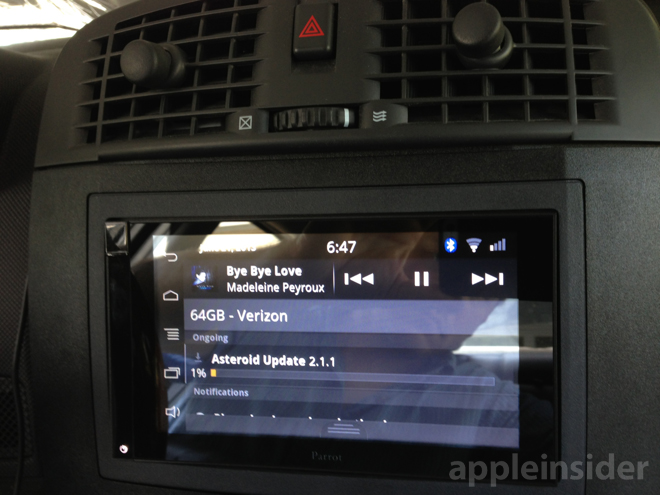
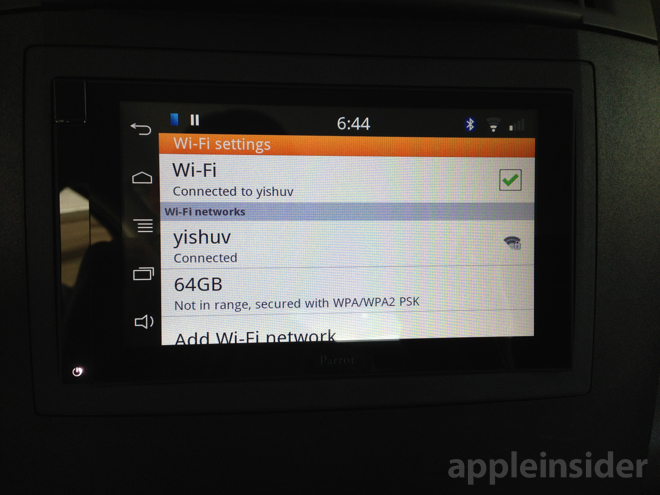
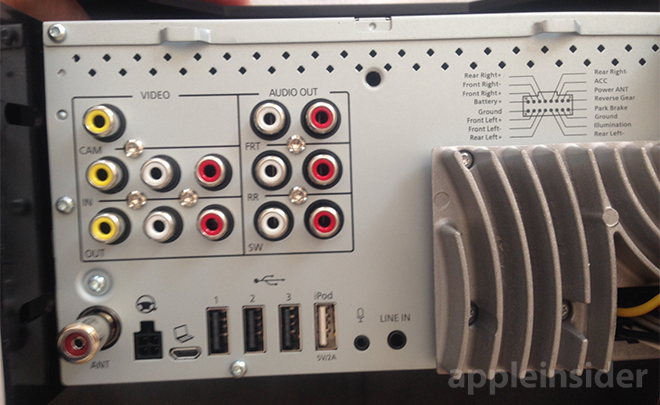

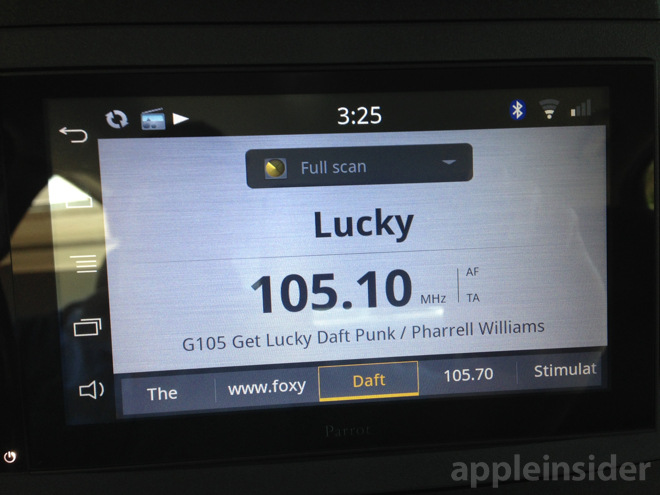
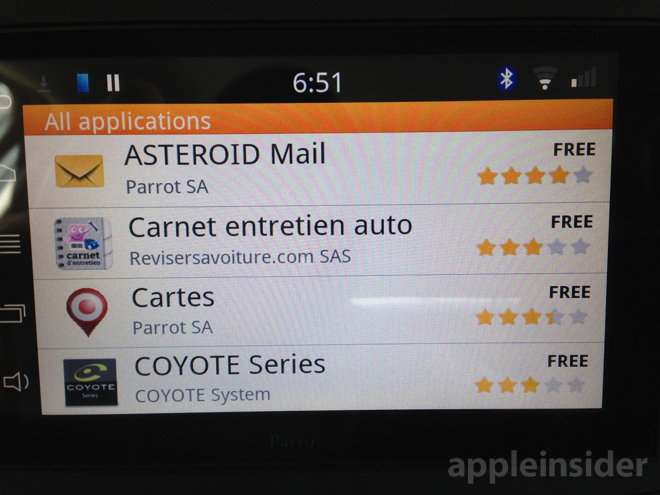
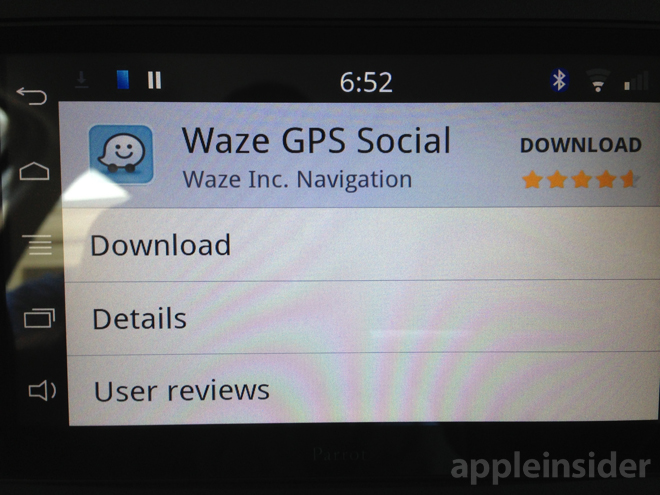
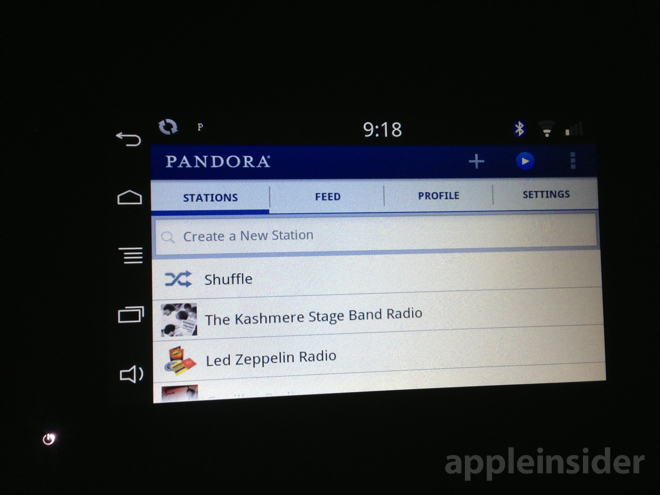
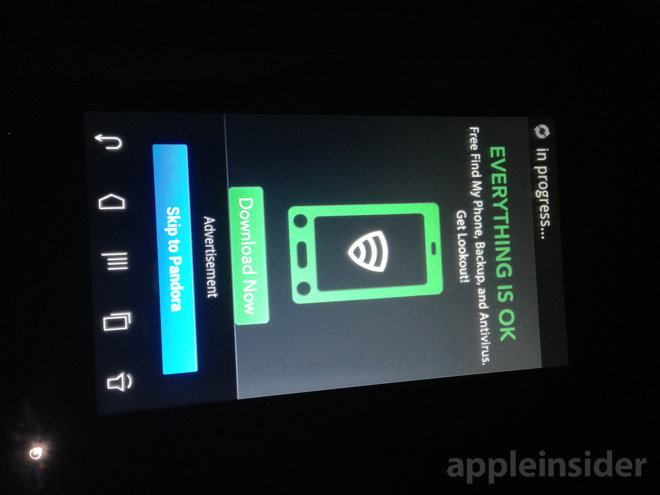
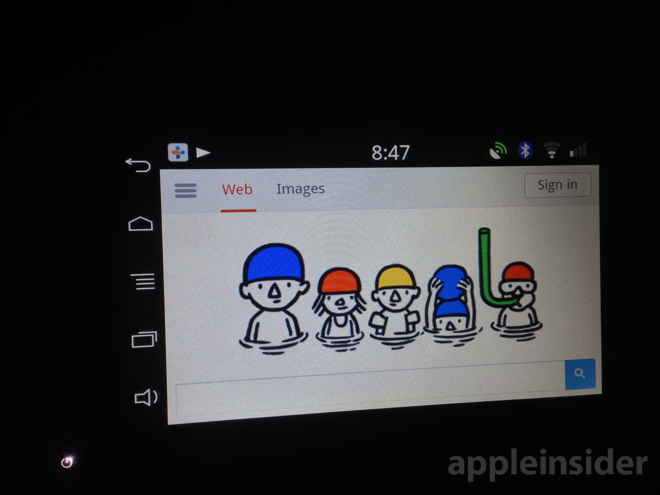
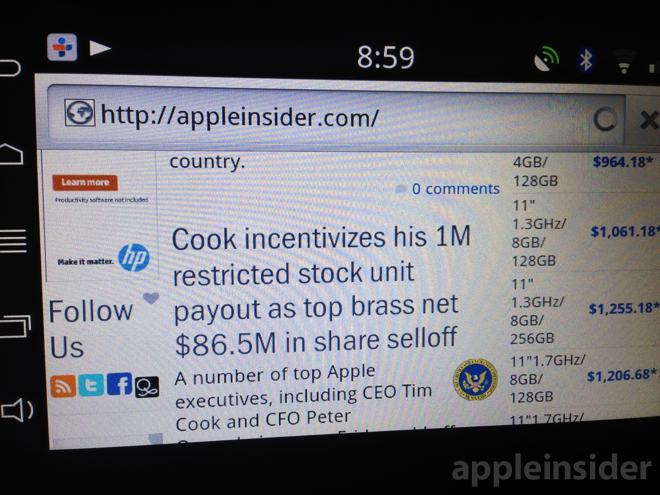




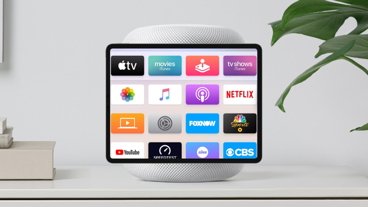


-m.jpg)






 Charles Martin
Charles Martin
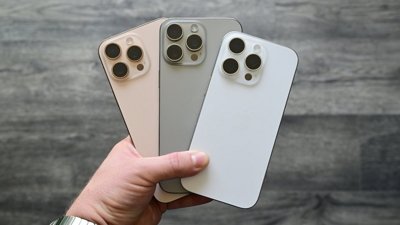
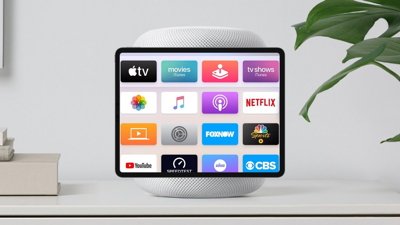
 Wesley Hilliard
Wesley Hilliard
 Stephen Silver
Stephen Silver
 William Gallagher
William Gallagher

 Marko Zivkovic
Marko Zivkovic








39 Comments
I don't get this product at all, given its market timing. Why would anyone choose such a clunky, half-baked product given the vastly superior options now becoming available in Apple's CarPlay and Android Auto?
Great, I was was just thinking that I needed a stereo running a shit OS that is 3 years out of date on the day that the unit was released!
Cons * Lousy antireflection coating What is all the fancy stuff good for when I can't see it?
Yuck
You should check out the Amazon vehicle fit guide for this product. It is hilarious.
http://www.amazon.com/Parrot-Navigation-Multimedia-Hands-Free-Bluetooth/dp/B00A6UTZ32
I'm so disappointed. It doesn't fit in my 1896 Duryea or my 1899 Packard Model A or my 1930 Harley Davidson D or my 2014 Cadillac Escalade ESV
Why don't they just tell us which vehicles it does fit?
It might be ok if you were building a custom car from scratch but most modern cars come with some built-in infotainment systems. Who is this for?